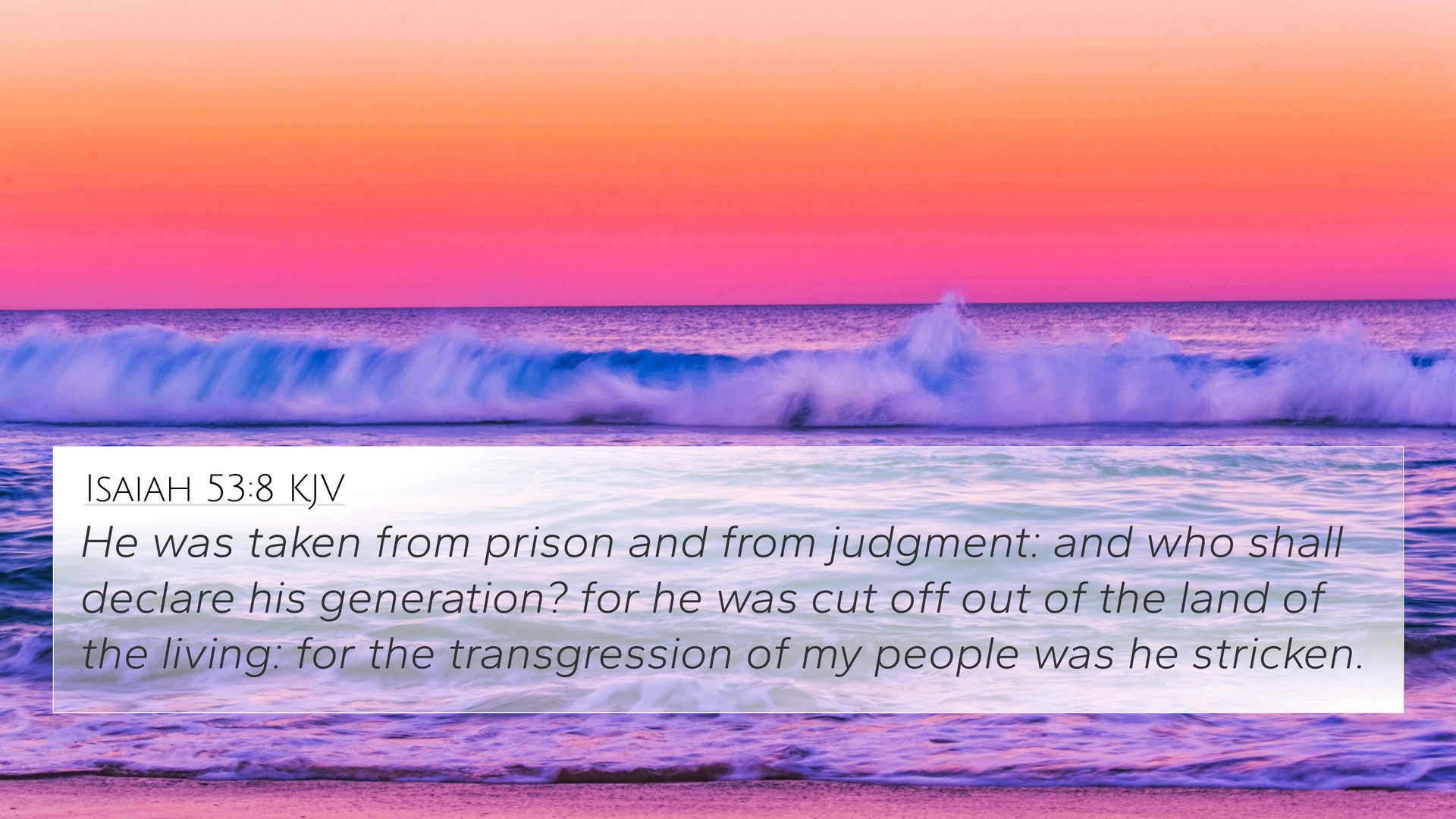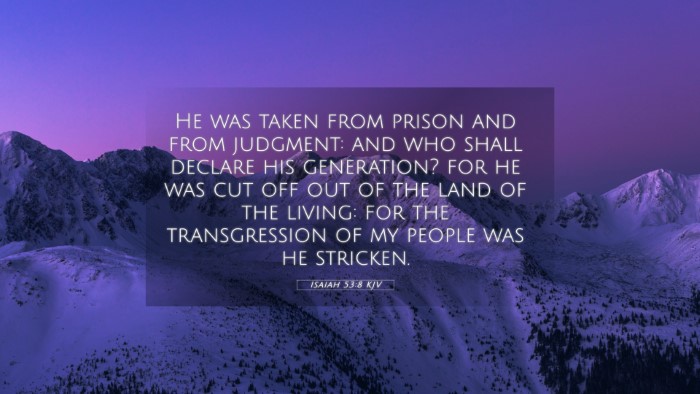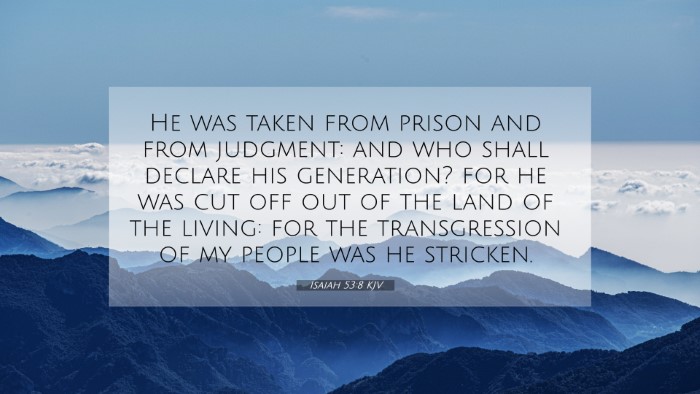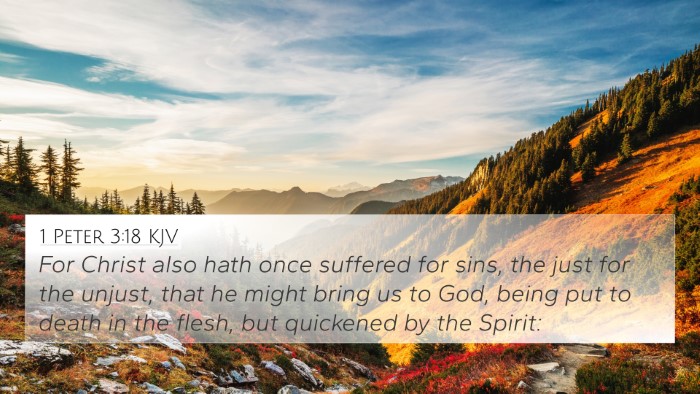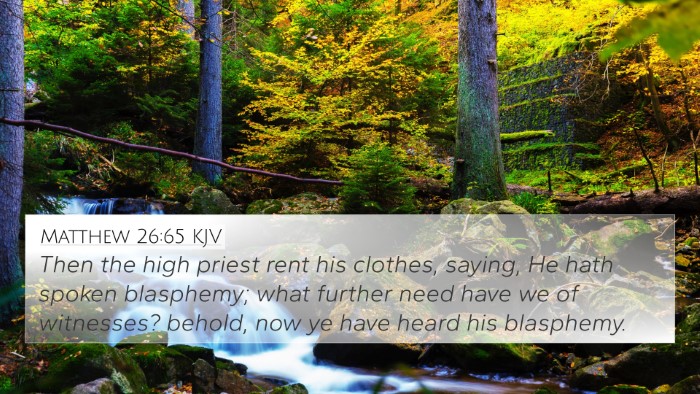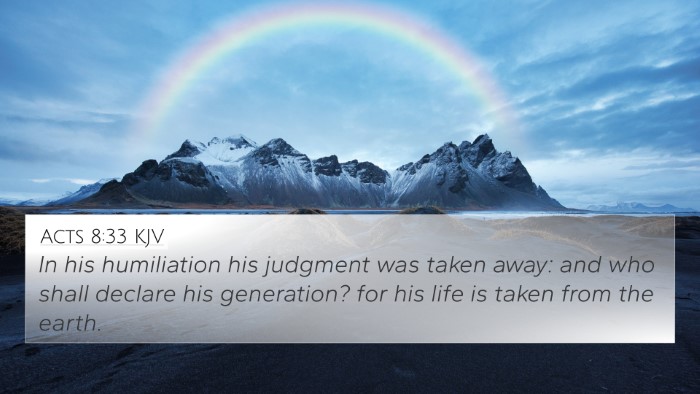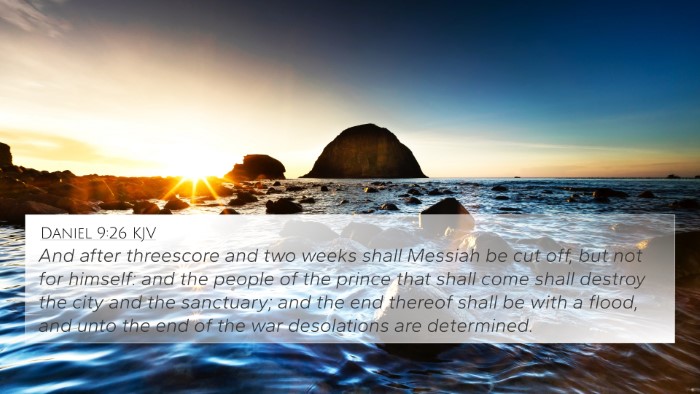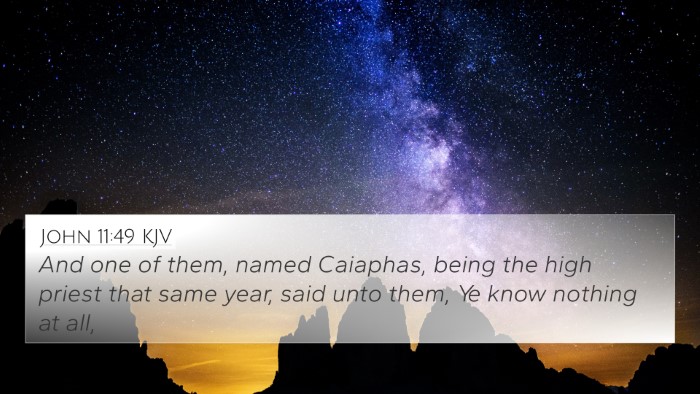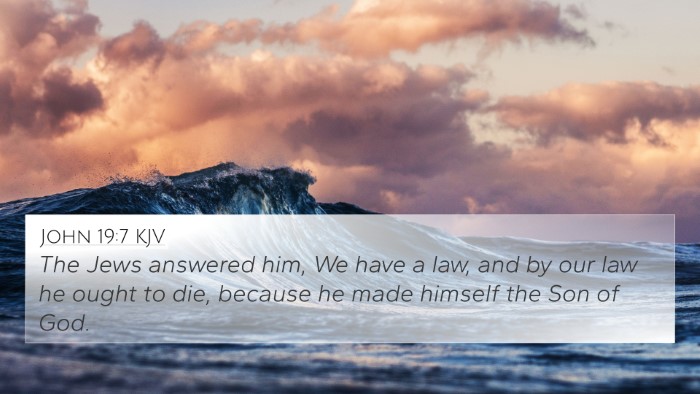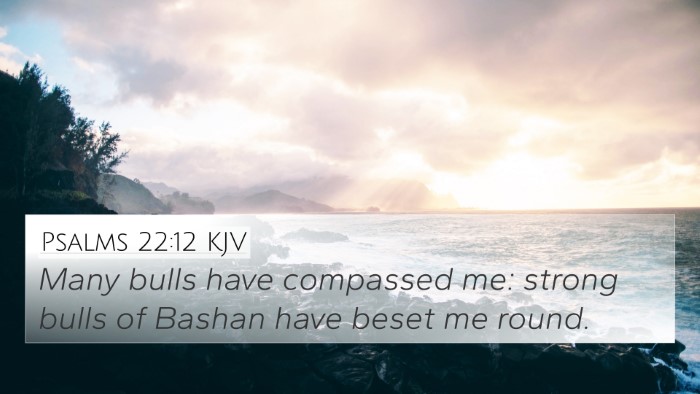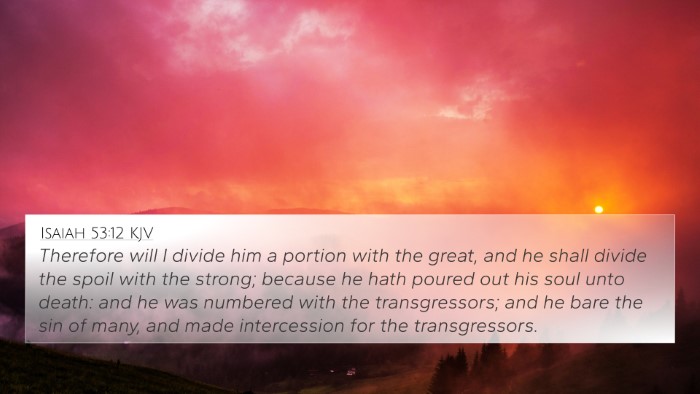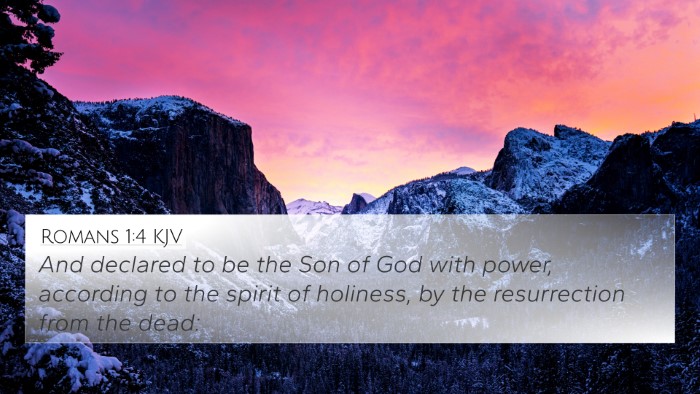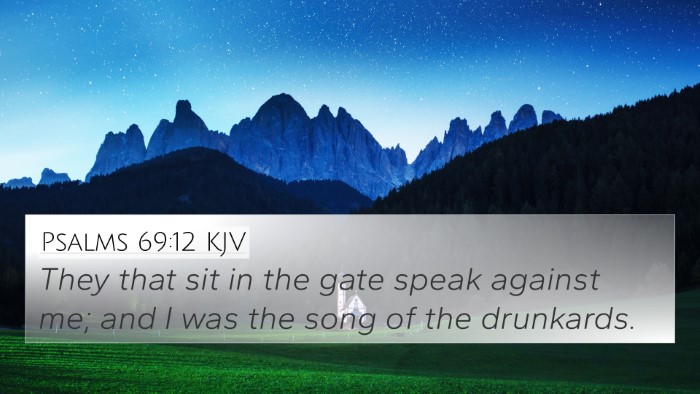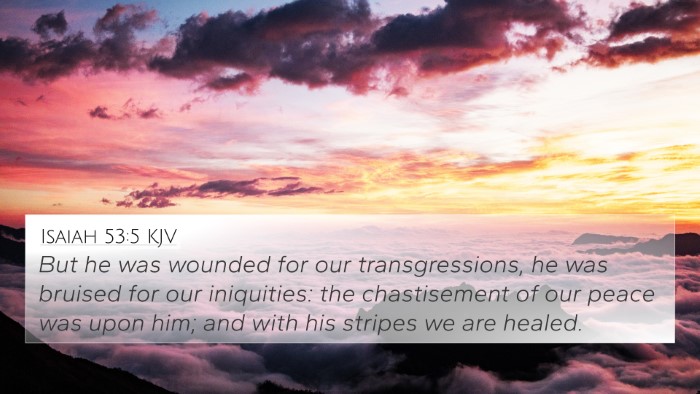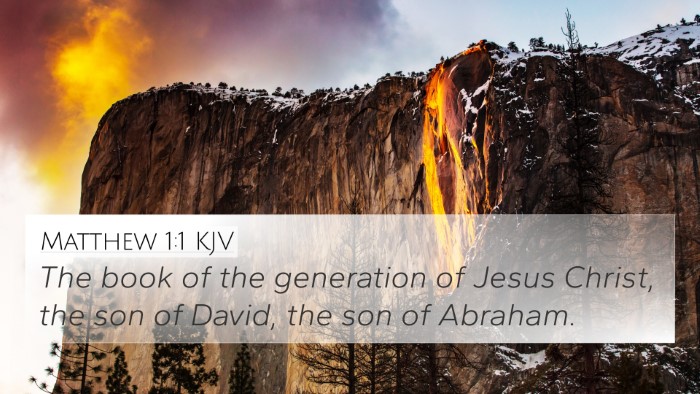Understanding Isaiah 53:8
Isaiah 53:8 reads: “He was taken from prison and from judgment: and who shall declare his generation? For he was cut off out of the land of the living: for the transgression of my people was he stricken.” This profound verse provides deep insight into the suffering and sacrifice of the Servant of the Lord, which is interpreted by many Christian theologians as a prophetic reference to Jesus Christ.
Verse Context and Significance
The context of this chapter is crucial as Isaiah speaks about the Suffering Servant who bears the sins of the people. Matthew Henry, in his commentary, describes the Servant as enduring great oppression without any physical means of defense. His silence in the face of injustice is notable, as is the ultimate realization that he was stricken for the transgressions of many.
Albert Barnes elaborates that the phrase "taken from prison" signifies the unjust suffering and affliction faced by the Servant. This prison can be seen as both a literal imprisonment and a metaphorical representation of the oppression faced at the hands of humanity. Furthermore, "who shall declare his generation?" emphasizes the idea that his life was cut short, and there appeared to be no continuation of his lineage, a theme reiterated throughout the Scriptures.
Adam Clarke adds a valuable perspective by reflecting on the emotional weight carried in this verse. Clarke interprets "cut off out of the land of the living" as a poignant reminder of the death that awaited the Servant, underlining both the extent of his suffering and the profound impact on those who witness his fate. This foreshadows the sacrificial nature of Christ’s death, connecting the prophetic text to the New Testament narrative.
Thematic Bible Verse Connections
Isaiah 53:8 resonates with multiple Biblical themes, highlighting God's plan for redemption and the vicarious atonement of Christ. Below are some significant cross-references that relate to this verse:
- Acts 8:32-35 – The Ethiopian eunuch is reading from Isaiah 53, revealing its fulfillment in Christ.
- Matthew 27:12-14 – Jesus' silence before his accusers reflects his suffering and submission.
- 1 Peter 2:24 – Reinforces the notion that Christ bore our sins in his body, drawing directly from the theme in Isaiah.
- Hebrews 9:28 – Illustrates the uniqueness of Christ's sacrifice, akin to the "cut off" mentioned in Isaiah.
- John 1:29 – John the Baptist recognizes Jesus as the Lamb of God who takes away the sins of the world, paralleling the sacrificial imagery of Isaiah.
- Isaiah 53:5 – “But he was wounded for our transgressions, he was bruised for our iniquities…” connects directly to verse 8.
- Romans 5:6-8 – Discusses how Christ died for the ungodly, echoing Isaiah's themes of sacrifice and suffering for others.
Tools for Bible Cross-Referencing
To fully explore the depths of Isaiah 53:8 and its connections in Scripture, one can utilize various tools for Bible cross-referencing, such as:
- Bible Concordance – A systematic guide to find where specific words or themes are mentioned throughout the Bible.
- Bible Cross Reference Guide – A resource that categorizes verses that speak to similar themes or narratives.
- Cross Reference Bible Study – An approach that encourages readers to examine the Bible in a way that reveals patterns across different texts.
- Bible Reference Resources – Comprehensive guides filled with context, commentary, and cross-references that aid in Bible studies.
Understanding the Significance
Isaiah 53:8 serves as a bridge between the Old and New Testaments, highlighting the continuity of God's redemptive plan through Christ. The verse encapsulates the suffering and ultimate sacrifice made for humanity, illustrating the necessity of understanding such connections through comprehensive Bible cross-reference materials.
This understanding not only enhances personal study but also enlivens sermon preparation and Biblical teaching as it demonstrates the rich inter-Biblical dialogue present throughout Scripture.
Conclusion
In conclusion, Isaiah 53:8, through the lens of multiple commentaries and cross-referencing, reveals the depth of God's plan through the suffering of His Servant. It illustrates the interconnectedness of Scripture, encouraging deeper engagement and understanding of the Biblical texts.
